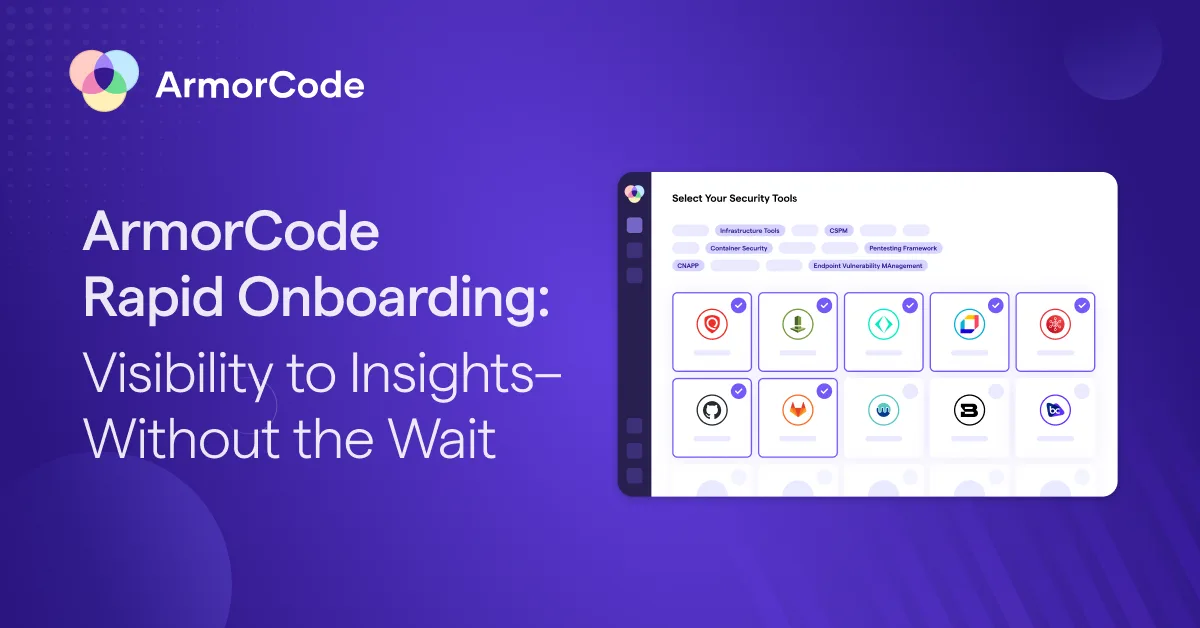How to Unify ASPM and RBVM for Application Security Risk Management

In our previous exploration of DevSecOps, we embarked on a journey to understand its profound impact on the contemporary cybersecurity landscape. As we delve deeper, let’s consider two significant obstacles that many teams encounter: the disjointed nature of AppSec tooling and the swift currents of modern software development.
What Challenges Are AppSec Teams Facing?
Operating within the dynamic universe of AppSec, teams are frequently up against a spectrum of complexities. Two prominent challenges emerge from this spectrum: siloed tooling—a divisive element in the ecosystem—and the unforgiving pace of modern software development.
When Islands Don’t Communicate: The Siloed Tooling Dilemma
In the vast ocean of software security, each tool can seem like an isolated island. Their self-sufficiency, while effective in its sphere, often lacks context and coordination with the bigger picture. This scenario begets two substantial issues:
A Myopic View of Threats: The full threat landscape remains shrouded in fragmented tooling, making holistic threat assessment and response difficult.
Prioritization Paradox: An overarching perspective is crucial for the efficient prioritization of threats. Unfortunately, isolated tools, each with their fragmented viewpoints, breed confusion, and ineffective resource allocation.
The Hurdle of Haste: Confronting Modern Software Development Speed
As we pivot to the world of Agile and DevOps, the ‘need for speed’ in software development is felt more than ever. With swift development cycles and frequent releases, AppSec teams often find themselves caught in a high-speed chase, where they’re constantly playing catch-up with their vulnerability management efforts. The repercussions of this swift cadence are worth scrutinizing:
Perpetual Catch-up: The pace can make vulnerability management feel like an endless high-speed chase, with teams always a step behind.
Security Oversights: In the rush to keep up, important security considerations may fall by the wayside, leading to a riskier software environment.
The Importance of Unifying AppSec with Infrastructure Vulnerability Management
As the complexities and challenges of AppSec and modern software development rise, the strategy to counter them needs to evolve too. This is where the concept of unifying AppSec with Risk-Based Vulnerability Management steps into the limelight.
Building Bridges between Isolated Islands
Unifying AppSec and Risk-Based Vulnerability Management is akin to constructing bridges between scattered islands. These islands represent siloed tooling or operations within the organization.
By forming connections:
Enhanced visibility: Teams can get a holistic view of vulnerabilities rather than fragmented snapshots.
Fostered coordination: It encourages coordinated efforts among teams, boosting overall efficiency in vulnerability management.
Benefits of Unified Approach
The fruits of this unification are multifold:
Clearer Threat Landscape: By breaking down silos, organizations can visualize their entire threat landscape. This holistic perspective enables a more informed approach to managing vulnerabilities.
Efficient Prioritization: With a clearer view of vulnerabilities and richer context that comes from unifying applications, cloud, infrastructure, and container signals, teams can effectively prioritize threats based on their potential impact.
Faster Remediation: A unified approach enables faster response times to threats, significantly reducing the window of exposure.
Perspectives on a Modern Governance Solution
So, what does a modern AppSec governance solution entail?
A truly modern solution goes beyond the ability to break down silos. It needs to demonstrate flexibility to operate harmoniously in any tooling environment. It should enable robust triaging and remediation workflows and be capable of leveraging automation to enhance these processes.
A non-siloed environment ensures a panoramic view of the threat landscape and fosters better communication among teams. Interoperability brings synergy, allowing the system to function as a well-coordinated unit despite diverse tooling.
Robust workflows ensure that potential threats are identified, prioritized, and remediated promptly. Automation, then, is the vital cog that enhances efficiency, reducing the chances of human error and speeding up the entire process.
Discover AppSec Governance with ArmorCode
In conclusion, the right AppSec governance solution isn’t an optional accessory but a fundamental necessity in today’s dynamic, software-driven world. By seamlessly integrating vulnerability management and AppSec, organizations can ensure not just smoother operations but also significantly boost their security posture, leading to robust and resilient systems.
So, where does your organization stand in this context? Could your operations benefit from a more unified, robust approach to AppSec governance? Remember, the act of choosing the right AppSec governance solution today is an investment in a safer, more secure future for your organization.
If you believe your organization could benefit from a more unified, robust approach to AppSec governance, get in touch with our team today for a personalized consultation. Let’s invest in a safer, more secure future for your organization together.



